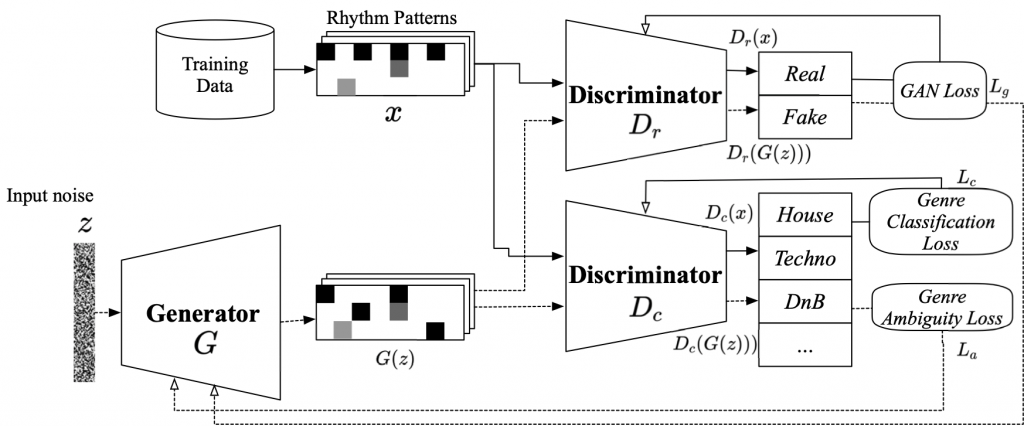Can GAN Originate New Electronic Dance Music Genres? — Generating Novel Rhythm Patterns Using GAN with Genre Ambiguity Loss
Abstract:
Since the introduction of deep learning, researchers have proposed content generation systems using deep learning and proved that they are competent to generate convincing content and artistic output, including music. However, one can argue that these deep learning-based systems imitate and reproduce the patterns inherent within what humans have created, instead of generating something new and creative.
In this paper, we focus on music generation, especially rhythm patterns of electronic dance music, and discuss if we can use deep learning to generate novel rhythms, interesting patterns not found in the training dataset.
We extend the framework of Generative Adversarial Networks(GAN) by adding another discriminator that classifies genres of generated rhythm patterns. The generator was trained to confuse the added genre discriminator as well so that it’s encouraged to diverge from the inherent distributions in the dataset. The paper shows that our proposed GAN can generate patterns that sound like dance music rhythms but do not belong to any genres in the training dataset.
The source code, generated rhythm patterns, and supplementary plugin software for a popular Digital Audio Workstation software are available on our website.

Publication:
Tokui, Nao. 2020. “Can GAN Originate New Electronic Dance Music Genres? — Generating Novel Rhythm Patterns Using GAN with Genre Ambiguity Loss.” arXiv [cs.SD]. arXiv. http://arxiv.org/abs/2011.13062.
Examples
Rhythm patterns generated with the proposed method
Comparison: Genre-conditioned GAN model
Music composed using the proposed method
We provide Ableton Live M4L device to try a pre-trained model on Ableton Live.